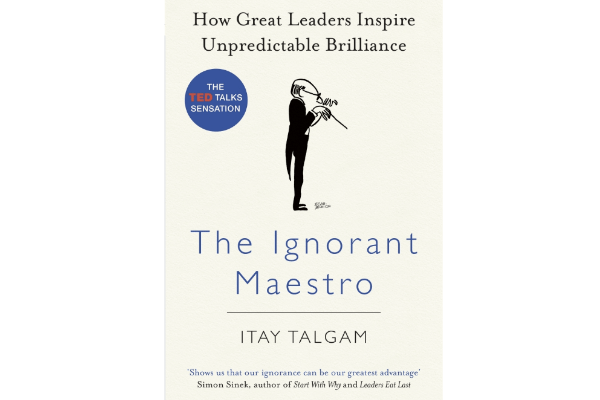I’ll never forget the first time I saw a true leader use a story to change the energy of a room. We were in a tense all hands meeting. A major reorganization had just been announced, and the air was thick with anxiety, skepticism, and unspoken questions. The senior leader, instead of diving into a spreadsheet or a deck of slides filled with jargon, just stood there for a moment.
Then, he started talking. He told us a story about his first job, about a time he faced a similar kind of uncertainty. He spoke about his fears, the mistakes he made, and the one conversation with a mentor that changed his perspective. It wasn’t a grand, heroic tale. It was simple, vulnerable, and incredibly human. As he spoke, you could feel the tension in the room dissolve. Shoulders relaxed. People leaned in. He hadn’t given us all the answers, but he had given us something far more powerful: a sense of shared experience, of understanding, and of hope.
In that moment, he didn’t just share information; he moved us. He inspired us. He did it with a story.
In an age of constant noise, data overload, and a never ending stream of notifications, what truly cuts through and sticks with us? A story. As a leader, your ability to tell a compelling story is no longer a “soft skill” or an optional extra. It is, in my experience, a leadership superpower. Great leaders understand that their primary role is to move people, to align them around a shared vision, and to build a culture of trust and purpose. And the most effective tool they have to achieve this is storytelling.
This guide is born from years of observing, practicing, and teaching the art of leadership storytelling. We’ll explore why stories work, the science that makes them so powerful, and a practical framework you can use to craft your own leadership narratives. This is about moving beyond simply managing and starting to truly lead.
ALSO READ: How Storytelling Can Help Make Impactful Leaders?
Why Your Brain Craves Stories: The Science of Leadership Storytelling
Table of Contents
Humans are fundamentally wired for stories. For millennia, long before the invention of PowerPoint or the KPI, stories were our primary method for transferring knowledge, building cultures, and shaping behavior. It’s in our DNA.
But this isn’t just a romantic notion; there’s hard science to back it up. Neuroscientists at Princeton University discovered a phenomenon called “neural coupling.” When a leader tells a compelling story, the listener’s brain activity begins to mirror the speaker’s. In essence, your brain and their brain sync up. This creates a powerful connection of understanding, empathy, and shared experience that is simply impossible to achieve with facts and figures alone.
Furthermore, a well told story does a few other magical things inside our brains:
- It Triggers Dopamine: When we are drawn into a story with suspense and a satisfying resolution, our brains release dopamine, a neurotransmitter associated with pleasure and reward. This makes the message more memorable and enjoyable to receive.
- It Engages Our Emotions: Stories don’t just speak to the logical part of our brain; they engage the emotional centers as well. And as we know, emotions are the primary drivers of our decisions and actions. Facts inform, but emotions move us to act.
- It Creates Order from Chaos: Our brains are constantly looking for patterns to make sense of the world. A story provides a clear narrative structure—a beginning, a middle, and an end—that helps us process and organize complex information far more easily than a list of bullet points.
Put simply, storytelling activates more of the human brain than any other form of communication. It is the most powerful tool a leader has to connect, persuade, and inspire.
Also Read: Influencing Through Stories
When to Weave a Narrative: High Impact Moments for Leadership Storytelling
You don’t have to wait for a big stage or a formal presentation to use storytelling. The most effective leaders I know weave stories into their everyday interactions. It becomes a natural part of their leadership style.
Here are some high impact moments where a story can make all the difference:
- Setting the Vision: When you’re introducing a new strategy or a bold new goal, a story can bring it to life. Instead of just talking about market share and revenue targets, tell a story about the customer whose life will be changed by your work. Illustrate what success will look and feel like.
- Leading Through Change: Change is inherently unsettling. People are naturally resistant to the unknown. A story can help them process uncertainty, overcome their fears, and see a path forward. Share a story of a past change that was difficult but ultimately successful.
- Reinforcing Culture and Values: Your company’s values are not just words on a wall. They are lived out in the actions of your team every day. Tell the stories of those moments. When you see someone go above and beyond for a customer or support a colleague in a difficult time, share that story. It makes your culture tangible and real.
- Giving Feedback and Coaching: A story can be a powerful way to deliver a difficult message or to help someone see a situation from a different perspective. Instead of just giving advice, share a story of a time you faced a similar challenge and what you learned from it.
- Building Your Team: Personal stories are the fastest way to build connection and psychological safety within a team. When you share a story about your own journey, your struggles, and your values, you invite others to do the same. This builds a foundation of trust and understanding that is essential for high performance.
- Navigating Crisis or Setbacks: In a crisis, your team doesn’t just need information; they need reassurance and a sense of direction. Great leaders use stories to instill calm, build confidence, and provide clarity in the midst of chaos.
ALSO READ: Book Review : Leader’s Guide To Storytelling
The 3C Framework: How to Craft a Compelling Leadership Story
I know what you might be thinking: “I’m not a natural storyteller.” The good news is, you don’t have to be. Storytelling is a skill that can be learned and practiced. To get you started, here is a simple but powerful framework that I use, the 3Cs:
1. Context: Start by setting the scene. Give your audience just enough background to understand the situation. Who was involved? Where and when was this happening? What was the general feeling or atmosphere?
Example: “I remember it was 2020, and our company was facing its toughest quarter ever. Our sales had plummeted by 40%, and for the first time, our entire team was working remotely, feeling isolated and stretched thin.”
2. Challenge: This is the heart of your story. Introduce the tension, the obstacle, the decision, or the turning point. This is where you create the emotional hook that will draw your audience in. What was at stake? What was the core conflict?
Example: “Morale had hit rock bottom. I was looking at the numbers, and the pressure was immense. We had to make some incredibly tough calls, and that included the painful possibility of laying off team members who were like family to us.”
3. Change (or Conclusion): This is the resolution. What action was taken? What was the outcome? And most importantly, what was the lesson learned? This is where you deliver the a-ha moment, the inspiration, the key takeaway for your audience.
Example: “But then, instead of cutting our people, we decided to bet on them. We redeployed our teams, pouring our energy into new digital initiatives we’d been putting off. It was a huge risk. But not only did we recover our losses within two quarters, we discovered an entirely new line of business, and our innovation pipeline more than doubled. It taught me that in a crisis, your people are not your biggest expense; they are your greatest asset.”
My one piece of advice here is to keep your stories real. Authenticity will always be more powerful than a perfectly polished but impersonal narrative. Don’t be afraid to share your struggles and your failures. People don’t connect with perfect leaders; they connect with human ones.
ALSO READ: 5 Elements of Storytelling
The 3 Stories Every Leader Needs in Their Toolkit
Not all stories are created equal, and different situations call for different kinds of narratives. I believe every leader should have these three types of stories ready to share:
1. The “Who I Am” Story: These are the stories that build trust and humanize you as a leader. They are personal experiences that reveal your values, your motivations, and what has shaped you.
Example: “Early in my career, I made a mistake that nearly cost us our biggest client. I was terrified to admit it. But I did, and my boss at the time, instead of firing me, sat down with me and we figured out a solution together. That experience taught me the profound value of radical ownership and psychological safety, principles that I have tried to build my own teams on ever since.”
2. The “Why We’re Here” Story: These are the stories that connect your team to a larger purpose or mission. They answer the question, “Why does our work matter?” They remind everyone of the human impact of what you do.
Example: “I want to share an email I received last week. It was from a small business owner who used our product to save her family business during the pandemic. Reading her words, I was moved to tears. It was a powerful reminder that we’re not just selling software; we’re helping people achieve their dreams. That’s why we do what we do.”
3. The “Where We’re Going” Story: These are the stories that paint a vivid and compelling picture of the future. They are stories of vision that generate hope, excitement, and commitment to a shared goal.
Example: “I want you to imagine a workplace where people are genuinely excited to come to work on Monday morning. A place where they feel empowered to take risks, where they are constantly learning and growing, and where they know, without a doubt, that they are making a real difference. That’s not just a dream. That’s the culture we are building together, starting today.”
Also Read: How A Visionary Leader Can Enable Innovation?
How to Become a Better Storyteller: A Leader’s Practice Guide
Like any skill, becoming a better storyteller takes practice. Here are a few simple things you can do to hone your craft:
1. Become a Story Collector: Great storytellers are first and foremost great observers and listeners. Pay attention to the stories happening around you every day. A customer win, a personal failure, a team success, a casual conversation in the hallway—these are all potential stories. Keep a journal or a note on your phone to capture these moments.
2. Practice Telling, Not Scripting: The goal is to be conversational, not to deliver a memorized monologue. Learn the key points of your story, but allow yourself to tell it naturally. Practice in low stakes situations, like team meetings or one on ones.
3. Keep It Simple: The best stories are often the simplest. Have one clear message for each story. Cut out any unnecessary details that don’t serve the core message. Aim for stories that you can tell in two to three minutes.
4. Use Sensory Details: Paint a picture with your words. What did you see, hear, or feel in that moment? The more vivid you can make your story, the more engaging it will be for your audience.
5. Always Have a Point: Every leadership story should have a clear takeaway. What is the lesson you want your audience to learn? What is the behavior you want to reinforce? What is the belief you want to strengthen?
Pitfalls to Avoid in Leadership Storytelling
As you practice, be mindful of a few common traps:
- Too Much Jargon: Avoid corporate buzzwords and acronyms. Keep your language simple, clear, and human.
- Making It All About You: Even when you’re telling a personal story, the ultimate goal is to serve your audience. The story should be a mirror for them, not just a window into your own life.
- Forgetting the Takeaway: Never end a story with a shrug. Explicitly connect it back to a leadership principle, a company value, or a call to action.
- Overusing It: Storytelling is a powerful tool, but it’s not the only tool in your leadership toolbox. Use it with intention, in the moments where it will have the most impact.
Conclusion: Lead with Stories, Not Just Strategies
In today’s world, information is a commodity. What is scarce, and what people are truly craving, is meaning. And that is the gift of storytelling. It helps people to understand, to believe, and to feel a part of something bigger than themselves.
As a leader, your job is not just to manage tasks and execute strategies. It is to move the hearts and minds of your people toward a shared and inspiring vision. And there is no better tool to help you do that than a well told story. The workplace challenge of disengagement and resistance to change is often a symptom of a deeper problem: a lack of connection and purpose. Storytelling is the bridge that can connect your team’s daily work to a larger, more meaningful narrative.
The next time you’re tempted to open a presentation with a slide full of bullet points, I challenge you to pause. Take a breath. And tell a story instead.
That might just be the moment your message finally lands, and your leadership truly begins.
At FocusU, we believe that storytelling is a critical competency for modern leaders. Our leadership development programs are designed to help leaders at all levels to find their voice, craft their stories, and lead with greater impact and influence.










